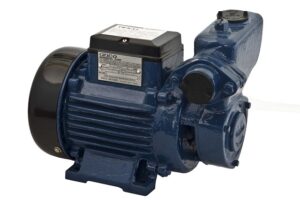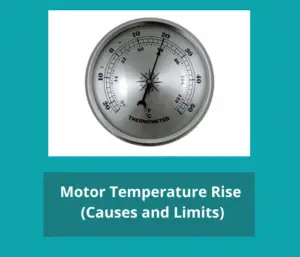Electric motors play a vital role in various industries and applications, powering machines and equipment that drive our modern world.
One crucial aspect of motor performance is its speed. When an electric motor runs slow, it can lead to decreased productivity, inefficiency, and even potential equipment failures.
In this article, we will explore the factors that can cause electric motors to run slow and discuss possible solutions to address these issues.
Table of Contents
Factors Affecting Electric Motor Speed
Voltage fluctuations, mechanical load, and overheating are the primary factors that can significantly impact the speed of an electric motor. Understanding these factors is crucial in diagnosing and resolving speed-related problems.
Voltage Fluctuations
One common cause of a slow-running electric motor is voltage fluctuations. Irregularities in the power supply can disrupt the motor’s performance and result in reduced speed.
Inadequate Power Supply: If the power supply to the motor is insufficient, it can cause the motor to run slower than its intended speed. This can occur due to undersized wiring, inadequate power capacity, or electrical system faults. Upgrading the power supply infrastructure or consulting with an electrician can help resolve this issue.
Voltage Drops: Voltage drops along the electrical circuit can also impact motor speed. Excessive distances between the power source and the motor or inadequate wire sizing can lead to voltage losses, resulting in slower motor performance. Properly sizing the wires and minimizing the distance between the power source and the motor can help mitigate voltage drop issues.
High Resistance in the Electrical Circuit: The presence of high resistance in the electrical circuit can cause a drop in voltage, affecting motor speed. Loose connections, corroded terminals, or damaged wiring can contribute to increased resistance. Regular inspections and maintenance, including checking connections and replacing damaged wiring, can prevent or rectify this problem.
Mechanical Load
The mechanical load imposed on an electric motor can also impact its speed. Several factors related to the mechanical components can contribute to a motor running slowly.
Friction: Excessive friction in the motor’s moving parts, such as bearings or gears, can impede its speed. Insufficient lubrication, worn-out components, or misalignment can increase friction and cause the motor to run slower. Regular lubrication and maintenance can minimize friction-related issues and ensure optimal motor performance.
Mechanical Malfunctions: Mechanical malfunctions, such as damaged or misaligned motor shafts, broken belts, or misaligned couplings, can affect motor speed. These issues require thorough inspection and repair by qualified technicians to restore the motor to its intended speed.
Excessive Load on the Motor: Subjecting an electric motor to a load beyond its rated capacity can cause it to run slow. Overloading the motor can result in increased heat generation, decreased efficiency, and potential motor damage. Ensuring that the motor is appropriately sized for the intended workload is essential to maintain optimal speed and performance.
Overheating
Overheating is another significant factor that can lead to a slow-running electric motor. Excessive heat can degrade the motor’s insulation, increase resistance, and impair its overall performance.
Insufficient Cooling: Inadequate cooling can cause the motor to overheat, leading to reduced speed. Factors such as blocked ventilation, dirty cooling fins, or malfunctioning cooling fans can contribute to insufficient cooling. Regular cleaning, ensuring proper airflow, and repairing or replacing faulty cooling components can help prevent overheating-related speed issues.
Overloading the Motor: Overloading the motor beyond its designed capacity generates excessive heat, impairing its performance and causing it to run slowly. It is crucial to ensure that the motor is not subjected to loads beyond its rated capacity to maintain optimal speed and prevent overheating.
Environmental Factors: Operating an electric motor in high-temperature environments or in areas with inadequate ventilation can lead to overheating and subsequent speed reduction. Providing proper ventilation, shielding from direct sunlight, and installing temperature monitoring systems can help mitigate the impact of environmental factors on motor speed.
Read also my article: Don’t Let Electrical Fires Burn You Out: Learn How to Prevent Transformer and Motor Overheating.
Motor Maintenance and Repair
Proper motor maintenance and timely repair are essential to prevent and address slow motor speed issues.
Regular Lubrication: Adequate lubrication of motor components reduces friction and prevents speed-related problems. Following the manufacturer’s recommendations for lubrication intervals and using the appropriate lubricants can help maintain optimal motor performance.
Proper Motor Sizing: Ensuring that the motor is appropriately sized for the intended workload is crucial. Consulting with motor experts or engineers during the selection process can help avoid issues related to underpowered or overloaded motors.
Troubleshooting and Diagnosis: A systematic troubleshooting approach is necessary to identify the root cause when a motor runs slow. Experienced technicians should perform diagnostic tests and inspections to pinpoint the specific problem areas. Timely repairs or component replacements can help restore the motor’s speed.
Conclusion
A slow-running electric motor can negatively impact productivity, efficiency, and equipment performance.
By understanding and addressing the factors that contribute to slow motor speed, such as voltage fluctuations, mechanical load, and overheating, it is possible to maintain optimal motor performance.
Regular maintenance, appropriate motor sizing, and proactive troubleshooting and repairs are key to ensuring smooth and efficient motor operation.
By implementing these measures, businesses and industries can minimize downtime, enhance productivity, and extend the lifespan of their electric motors.


